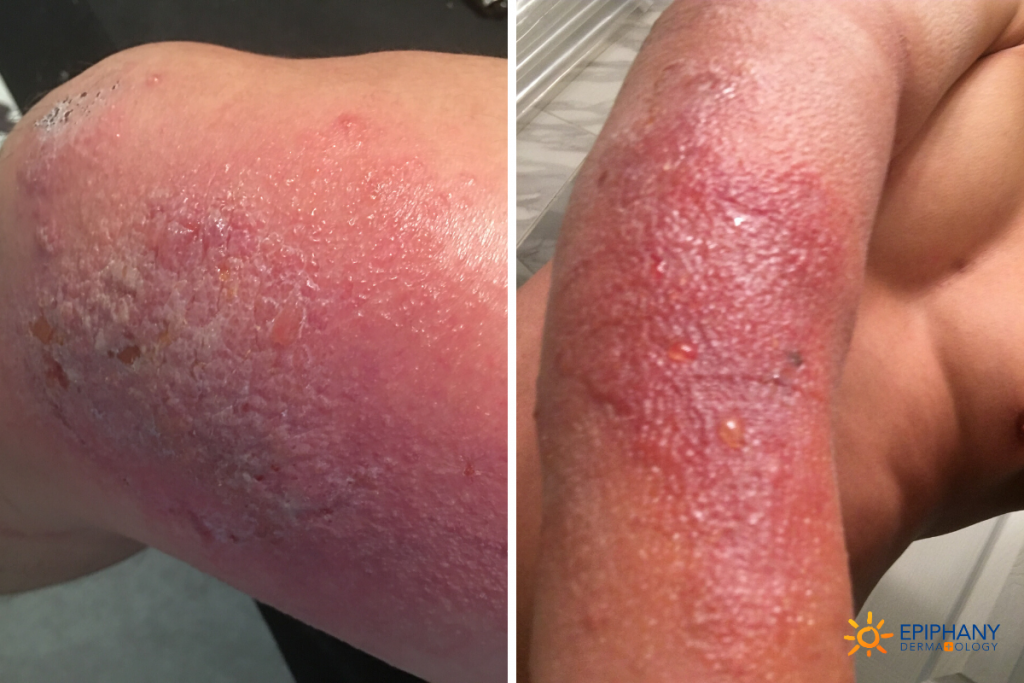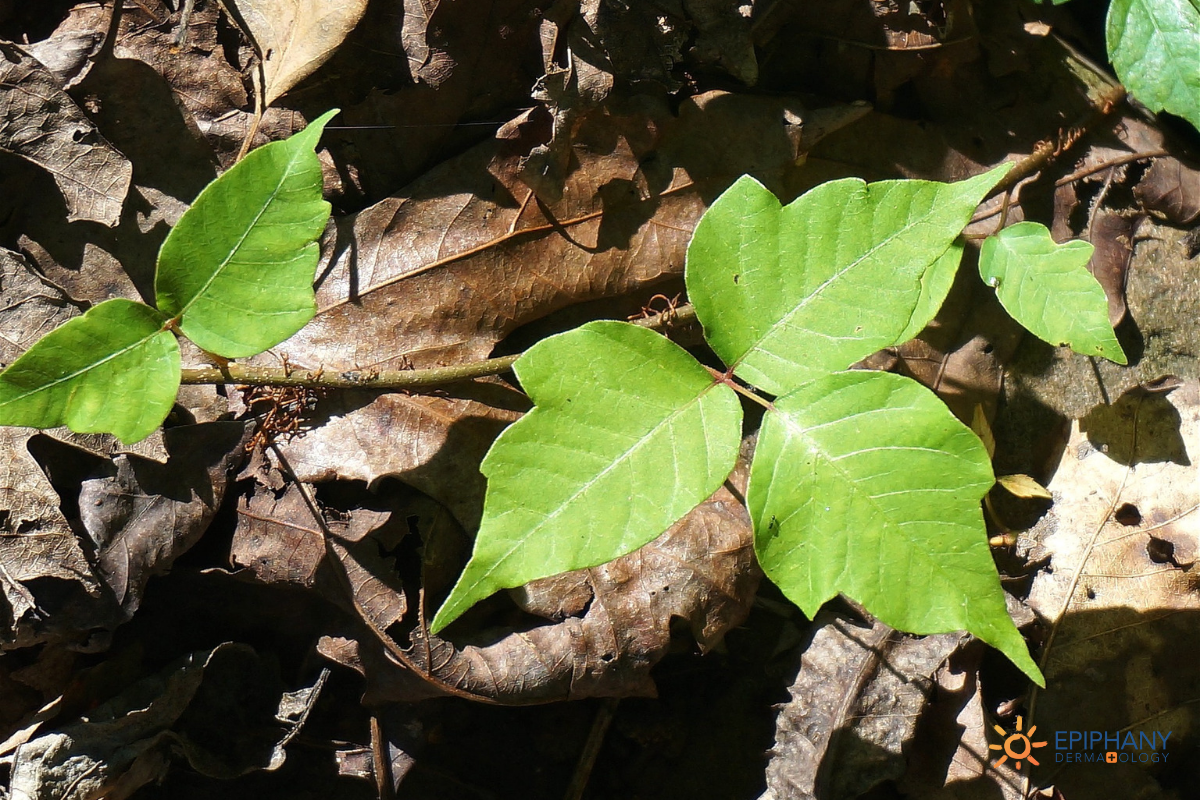Poison ivy refers to a class of plants that produce urushiol, an oil known to cause an allergic reaction. While not everyone is allergic to this oil, some people are highly allergic to urushiol and develop a contact rash when they’re exposed to it.
Poison ivy plants have a grouping of three leaves (hence the saying, “Leaves of three, leave them be!”). Yet, this oil also exists on poison oak and poison sumac, which vary in appearance. While avoiding three-leaf clustered vines can help you avoid poison ivy, it is not an accurate indicator of poison oak or poison sumac.
Poison Ivy & Poison Oak cause problems almost year-round here in Texas. The rash that develops from these plants is a true allergy. After the first exposure to these plants, the body develops an allergy. The next time you come into contact with the plant, the allergic reaction begins on the skin as a rash. Each time you are exposed, the allergic rash can become worse.
What are the Symptoms of Poison Ivy?
A poison ivy reaction usually begins with itchiness and redness. The rash then develops blisters. In more severe cases, the affected area will also swell.
Most often, poison ivy remains external. You’ll see exactly where the oil has touched your skin as you experience redness, blistering, and swelling in the area of contact. However, if you were exposed to aerosolized oil, you may experience difficulty breathing or see an outbreak of the rash in various places on the body.

What Causes Poison Ivy?
Poison ivy rashes are a result of coming into contact with urushiol oil. There are multiple plants that carry this oil and multiple ways to come into contact with it.
Most commonly, people contact the oil by directly touching poison ivy, poison oak, or poison sumac. However, you can also indirectly contact the oil if the oil has touched a surface that you touch afterwards. For example, if your pet encounters the plant and oil gets on their fur, they can spread the oil to anyone who then touches that area. If someone’s clothes brush against a plant, they can spread it to anyone who touches their clothing.
The oil can also become aerosolized. If you’re cutting down or burning the plant, the oil is released into the air and can affect those who are allergic. Breathing in the oil can result in an allergic reaction even if you have not touched the oil directly.
If you suspect you’ve come into contact with poison ivy, wash your skin immediately with soap and water. If you suspect you contracted it indirectly through clothing or a pet, wash out the oil. Otherwise, you will continue to be exposed to the oil and can contract it repeatedly.
What are the Treatment Options for Poison Ivy?
Steroid medications are the most effective way to calm the redness, itchiness, and swelling caused by poison ivy until the reaction resolves on its own.
Many people only see symptoms in the area that was directly exposed to the oil. If the affected area is localized, we use topical steroids to calm the rash and stop the swelling.
Other people are highly allergic to the oil and need a more aggressive treatment. These patients may have a small contact area, but their whole body reacts. In these cases, we prescribe systemic steroids, either through an intramuscular injection or oral medication. These systemic steroids will help calm the reaction and ease the symptoms more quickly.
In some cases, a secondary infection sets in because the skin has been broken down. In these cases, your dermatologist may prescribe an oral antibiotic in addition to prescription steroids.
FAQ’s
How did I get poison ivy if I never touched the plant?
You can get poison ivy from objects that happen to pick up the oil including coats, clothing, gloves, and pets. Also, another person may have contacted the plant without realizing it and you came into contact with them afterward.
If someone burns or cuts a poison ivy plant, the oil can become aerosolized. If you’re in close vicinity to this, it may be enough for you to flare with poison ivy.
Is poison ivy contagious?
Poison ivy is not contagious in traditional ways. If you’ve already washed off the oil, you are not contagious. People cannot contract poison ivy from your rash. They can only get the poison ivy from the oil. If you still have the oil or resin on you, you can spread it to people susceptible to developing a contact allergy to poison ivy. But, if you’ve already washed off the oils, you will not spread poison ivy.
What should you do after coming into contact with poison ivy?
If you come into contact with poison ivy, wash your skin right away. Then, wash anything else the oil may have touched (clothing, garden gloves, pets, etc.).
If you begin to experience redness, itchiness, and other symptoms of poison ivy, begin a topical steroid cream immediately. If it seems to be spreading, call the dermatologist to begin a more systemic treatment.
How quickly can I get rid of poison ivy?
Poison ivy rashes typically respond to steroids quickly. If you get appropriate therapy for your reaction, it can stop within 1-2 days.
Additional Poison Ivy Resources
Click here to find an Epiphany provider near you.

